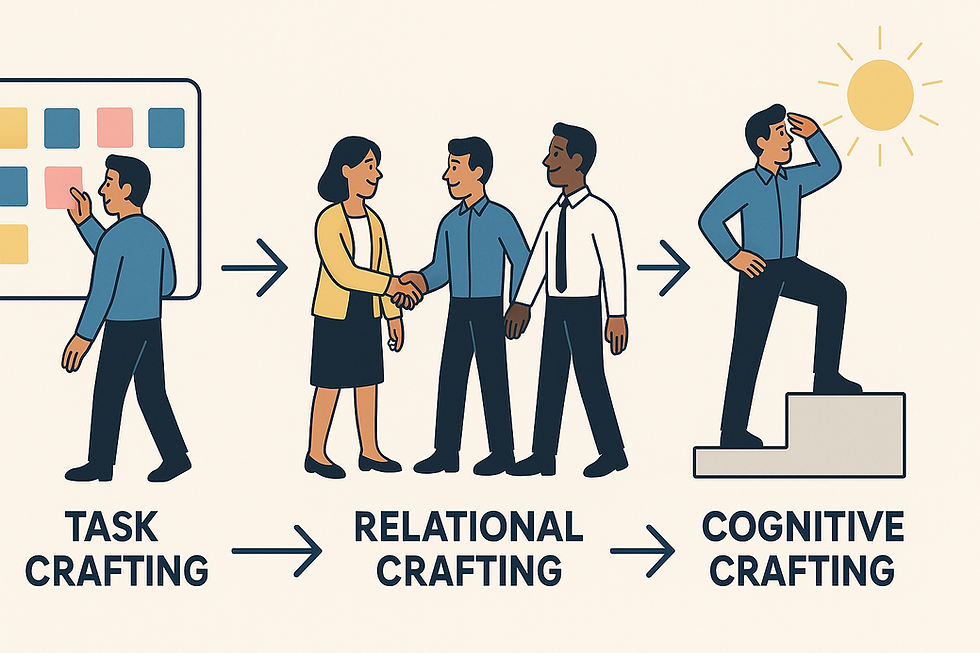Job Crafting: How Employees Shape Change From the Bottom-Up
- kristian8120

- Sep 29
- 2 min read

Organizational change often feels like something handed top-down. Leaders decide. HR announces. Employees receive the memo. The usual result is resistance, disengagement, or quiet compliance. But change does not have to be only a top-down exercise. Employees have a way to take ownership and make change meaningful: job crafting.
Job crafting is the practice of reshaping your role so it aligns with your strengths, passions, and values. It is a proactive behavior that makes work feel more personal and purposeful. Instead of waiting for the organization to redesign the job, employees act as architects of their own experience. This high-agency mindset (believe in their power to influence their own life and the world around them) is powerful in times of change.

What job crafting looks like
Job crafting shows up in three ways:
Task crafting. Changing the type, number, or nature of tasks. For example, a marketer who takes on data analysis because it plays to their strengths, while delegating routine reporting.
Relational crafting. Adjusting the quality or quantity of work interactions. For example, an engineer who seeks more collaboration with product managers to feel closer to customer impact.
Cognitive crafting. Reframing how one sees the purpose of their job. For example, a call center agent who views their role not as answering complaints but as restoring trust in the company.
Each form of crafting shifts the job from a rigid description into a living role shaped by the individual.
Why it matters in change management
Change fails when employees feel powerless. Job crafting solves this. By reshaping their own roles, employees gain a sense of control, which makes them more adaptable. Research shows that organizations supporting job crafting report higher engagement and lower burnout compared to those with fixed, inflexible roles. (Rošková & Faragová, 2020; Parker et al., 2025)
In other words, job crafting is one of the tools to manage change initiatives from a bottom-up strategy. When employees learn to adjust their roles, they become more willing to adjust to organizational change.
The impact on engagement and ownership
Employees who craft their jobs report stronger meaning and satisfaction. They are not stuck waiting for leaders to define the future. They take part in shaping it. This process builds resilience and adaptability, two qualities every organization needs during transformation.
When employees craft their work, they shift from passive recipients of change to active participants in it. That shift builds ownership, which drives performance.
Leadership’s role
Leaders cannot order employees to job craft. But they can create the conditions for it. That means:
Allowing autonomy in how tasks are done.
Encouraging cross-team collaboration and mentorship.
Communicating the broader purpose of work so employees can connect their role to impact (Petrou et al., 2016).
Leaders who support job crafting build teams that adapt faster and perform better during transitions.
At Alvigor, we help organizations bring job crafting into their change management approach. Our training equips leaders to encourage autonomy and employees to take ownership of their roles.



Comments